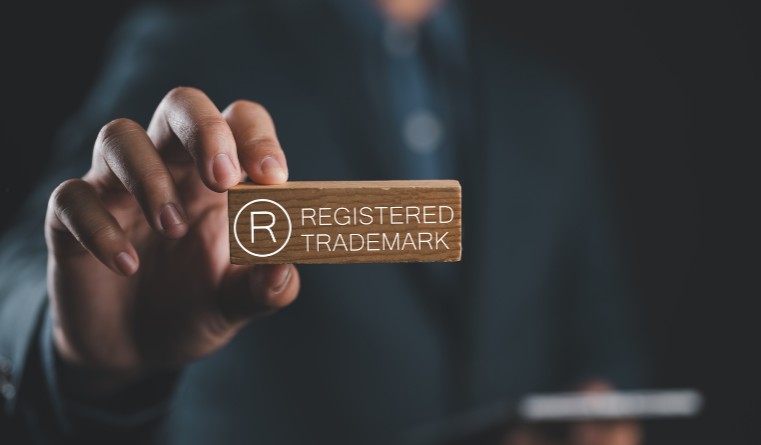How to change a trademark at the applicant’s initiative
31 May 2025

The Civil Code of the Russian Federation distinguishes several situations that are related to the change of a trademark (designation). Among them, there are those that are directly related to changes in the trademark itself at the initiative of the applicant.
According to the Civil Code of the Russian Federation, the change of a trademark (designation) on the applicant’s own initiative is possible in the following cases:
The applicant wants to change the designation that has been declared for registration as a trademark. This situation is regulated by Clause 2 of Article 1497 of the Civil Code and gives the applicant the right to supplement, clarify or correct the application materials during the examination of the trademark application, including by submitting additional materials, in particular, related to the change of the designation itself.
At the same time, you need to keep in mind two important conditions:
-
The relevant materials could only be filed before Rospatent had taken a decision on the application; and
-
Changes to the claimed trademark designation must not be significant.
Otherwise, Rospatent will not accept such material for consideration, and the applicant will have to submit an independent application.
The right holder wants to change the registered trademark. This situation is regulated by Clause 1 of Article 1505 of the Civil Code and gives the right holder the right to file an application with the office to change certain elements of the trademark, including for the purpose of correcting obvious and technical errors.
When filing such an application, it should be borne in mind that the change of individual elements of the trademark should not change its essence.
Thus, in both situations, the applicant may change the trademark or claimed designation only if such changes are not substantial. However, the problem is that the Civil Code of the Russian Federation does not establish the concept or signs of significant changes in a trademark and designation. In this regard, the first and perhaps the main question faced by the applicant is how to determine before filing the relevant application that the planned changes are not significant, so as not to be rejected by the Rospatent.
The methods of checking changes “for lack of materiality” differ depending on the situation in which the relevant application is submitted, namely:
The applicant wants to change the designation at the stage of examination of the application. In this case, when conducting a preliminary check, it is necessary to be guided by the Order of the Ministry of Economic Development of Russia dated 20.07.2015 No. 482, which establishes the definition and examples of significant changes, in particular:
-
Changes are considered significant if they significantly change the perception of the claimed designation as a whole or its main elements, i.e. those that occupy a dominant position in the designation;
-
Examples of significant changes: inclusion in the claimed designation or exclusion of a dominant verbal or pictorial element from it; phonetic or semantic change of the main verbal element; a graphic or semantic change in the main pictorial element or a combination of colors that affects the perception of the designation.
The right holder wants to change the registered trademark. Unlike the previous situation, the criteria for the materiality of a change in a registered trademark are not legally established. In this case, it is necessary to focus on the positions that have been developed by judicial practice and summarized in the Review of the Intellectual Property Court on the Determination of the Materiality of Changes in Registered Trademarks. In particular, you need to consider the following:
-
A change in a registered mark is possible only if the new designation is legally identical to the previously registered one. Not only are actually identical trademarks considered legally identical, but also trademarks that have differences, the influence of which on the perception of the designation by the Russian consumer is extremely small;
-
Examples of legal identity: minor differences in the font (its size, the use of lowercase rather than uppercase letters, the inclination of letters, placement, etc.); differences only in shades of one colour, etc.
To summarize the above, it can be said that, in accordance with the practice of registration of trademarks, changes to the claimed designation and registered trademark can be made if:
-
The general layout of the sign and its main elements (occupying a dominant position and influencing the perception of the sign as a whole) have not changed – all elements that affect the perception of the sign as a whole are present in the sign;
-
The colour scheme of the claimed designation has not changed; and
-
The modified reproduction does not contain any new elements that would not have been present in the claimed designation at the time of filing.
It is important to note that even with a slight, in the opinion of the applicant, deviation from these requirements, the old and amended mark (designation) may be recognized not as legally identical, but as similar. In this case, the department will refuse to change the mark.
The law does not limit the number of times a trademark owner can modify a registered trademark. However, it is important to note that regardless of how many times changes are made, the registration authority compares the new designation to the originally registered version – not to any intermediate modified versions. In other words, every new modification is assessed against the first registered trademark, not the most recent version.
We hope this article helps applicants successfully modify their trademark or applied-for designation. If there are any uncertainties about whether a change qualifies as significant or if further guidance is needed, the experts at Zuykov and partners are ready to provide assistance in resolving all trademark-related matters.








